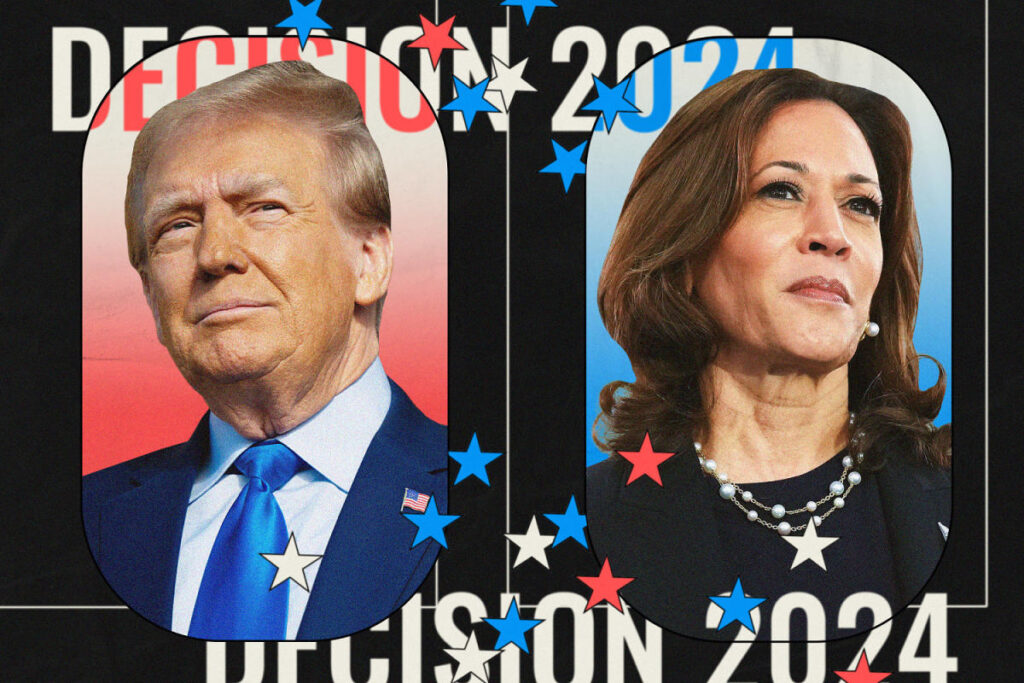Donald Trump’s victory in the presidential election on a Wednesday, as projected by NBC News, marks a significant political comeback after his previous loss in 2020. Trump’s supporters celebrated the win as historic, with Senator JD Vance labeling it the “greatest political comeback in the history of the United States.” Despite the excitement among Republicans, the atmosphere was drastically different for Democrats. Many in the party were left in shock and confusion over the rapid shift in key battleground states, leading to feelings of despair and defeat. Some key Democratic strategists expressed their dismay at the inability to compete effectively against Trump, expressing sentiments of it being a case of political malpractice.
Vice President Kamala Harris’s campaign faced a severe setback, particularly as early results began showing Trump’s wins in pivotal states like Georgia and North Carolina. Harris chose to remain silent at her campaign headquarters, lacking the confidence to rally her supporters amidst a disastrous night of results. This decision, coupled with the mood shifts from early optimism to disappointment, showcased the ever-growing concern among Democratic officials and supporters. As vote counts suggested a bleak outlook, those present were left in near silence, unsure of how to respond to the unfolding defeat, with some even demanding music in an attempt to lighten the mood.
The outcome of the election significantly impacted the Democratic Party, which is now grappling with a decreased voter identification rate. Exit polls revealed that only 32% of voters identified as Democrats, declining from 37% in the previous election cycle. Concurrently, the number of voters identifying as independent reached its highest level in two decades at 34%. This signals a troubling trend for the Democrats, as they observe a loss of connection with the electorate and the growing significance of independent voters.
Demographics played a critical role in analyzing voter behavior in the election. Notably, Latino men swung towards Trump, showing a crucial shift from the 2020 election results. This critical demographic voted 54% in favor of Trump, contrasting sharply with the Democratic support they provided in 2020. Conversely, while Harris managed to maintain an advantage among Latino women, it had diminished compared to Biden’s prior performance. Additionally, older voters leaned toward Harris, marking a reversal compared to the previous election’s results, suggesting a complex interplay of demographic trends influencing voting patterns.
Issues central to the candidates also demonstrated a divisive voter landscape. Voters overwhelmingly prioritized differing concerns, with Harris supporters focusing on democracy and Trump supporters emphasizing economic issues. The divide illustrated the primary concerns driving each campaign, with Trump pushing for economic recovery and immigration policies, while Harris aimed to restore abortion rights in the wake of the Supreme Court’s decisions. The data reflected a shift in public opinion on abortion, with calls for legality in most cases rising significantly compared to the 2020 election, showcasing evolving voter attitudes.
Despite the initial confidence from both campaigns leading into election day, exit polls indicated a significant degree of dissatisfaction among voters regarding the state of the country. Only a fraction reported feeling satisfied or enthusiastic, highlighting a broader emotional strain within the electorate. Demographic shifts were evident in the popularity of candidates, as Trump’s favorable ratings saw a decline among white voters while gaining traction among Black and Latino communities. This shift suggests a more complex electorate than in previous elections, with implications on party strategies moving forward as both parties reevaluate their positions in light of the changing political landscape.

